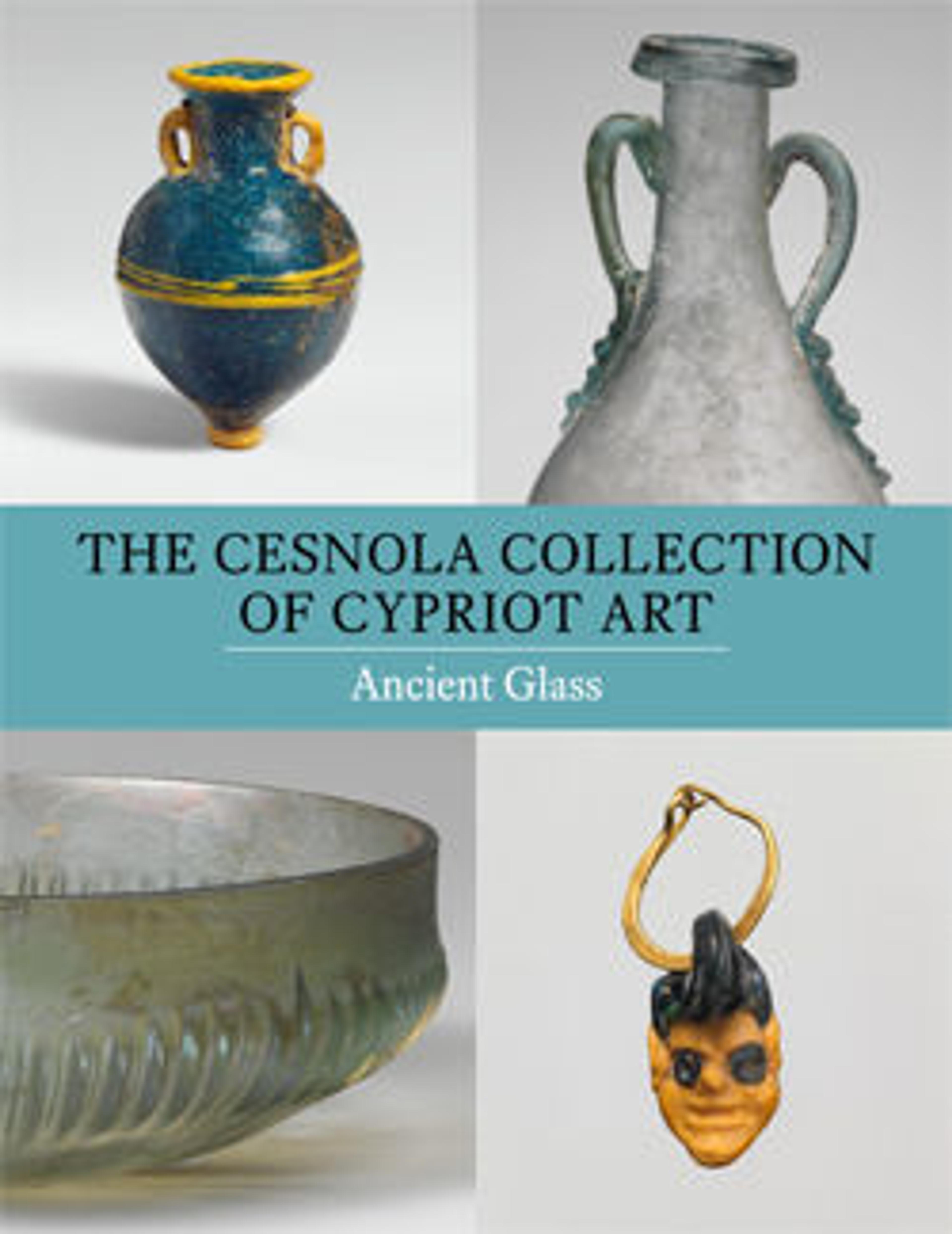Glass medallion with the bust of a woman or goddess
Translucent deep purple, appearing opaque black.
Oval, with deep relief on upper surface, and flat, smooth back.
On a plain background, a female bust, facing front, with head turned slightly to left, wearing a diadem on her hair parted at center and with locks or veil headdress falling behind shoulders, and drapery on shoulders and across chest; narrow frame, comprising a banded scallop design, interspersed with small beads, forming eight roughened areas, each with a central six-pointed star.
Broken with part of top of frame missing, and nose of woman also missing; dulling, small patches of brilliant iridescence, and faint brownish weathering on back.
Despite its small size, this molded glass object has finely worked details, both on the central bust of a woman or goddess and on the ornate raised oval frame. It was presumably intended as a decorative appliqué for a piece of jewelry, possibly even a diadem or ritual headdress.
Oval, with deep relief on upper surface, and flat, smooth back.
On a plain background, a female bust, facing front, with head turned slightly to left, wearing a diadem on her hair parted at center and with locks or veil headdress falling behind shoulders, and drapery on shoulders and across chest; narrow frame, comprising a banded scallop design, interspersed with small beads, forming eight roughened areas, each with a central six-pointed star.
Broken with part of top of frame missing, and nose of woman also missing; dulling, small patches of brilliant iridescence, and faint brownish weathering on back.
Despite its small size, this molded glass object has finely worked details, both on the central bust of a woman or goddess and on the ornate raised oval frame. It was presumably intended as a decorative appliqué for a piece of jewelry, possibly even a diadem or ritual headdress.
Artwork Details
- Title:Glass medallion with the bust of a woman or goddess
- Period:Early Imperial
- Date:1st century CE
- Culture:Roman, Cypriot
- Medium:Glass; cast in a mold
- Dimensions:Height: 1 5/16in. (3.4cm)
Width: 1 3/16in. (3cm) - Classification:Glass
- Credit Line:The Cesnola Collection, Purchased by subscription, 1874–76
- Object Number:74.51.123
- Curatorial Department: Greek and Roman Art
More Artwork
Research Resources
The Met provides unparalleled resources for research and welcomes an international community of students and scholars. The Met's Open Access API is where creators and researchers can connect to the The Met collection. Open Access data and public domain images are available for unrestricted commercial and noncommercial use without permission or fee.
To request images under copyright and other restrictions, please use this Image Request form.
Feedback
We continue to research and examine historical and cultural context for objects in The Met collection. If you have comments or questions about this object record, please contact us using the form below. The Museum looks forward to receiving your comments.
